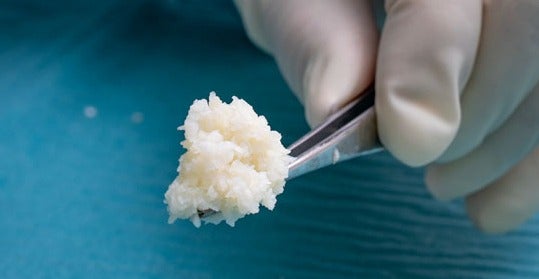
Kerecis has introduced a new easy-to-use fish-skin graft, dubbed Kerecis Omega3 MicroGraft, to treat complex trauma and uneven wounds in operating rooms, wound centres and doctors’ offices.
KerecisOmega3 MicroGraft is intact fish skin divided into fragments that mold into wound beds.
According to the company, the KerecisOmega3 MicroGraft fills a gap as wound-treatment companies withdraw human-derived products per the Food and Drug Administration (FDA) guidance.
To enhance the product’s efficiency and improve healing, the easy-to-use graft is divided into small units to fill hard-to-reach areas.
With a particle size of around 0.15cm, the fish-skin graft provides easy application in deep wound spaces that are unable to access by meshed or unmeshed sheets.
KerecisOmega3 MicroGraft has secured approval for use in a range of wound conditions, including partial and full-thickness wounds, surgical and trauma wounds, and pressure, venous and diabetic ulcers.
Northern Illinois Foot & Ankle Specialists DPM Patrick McEneaney said: “This product is extremely easy to use. The versatility of the Kerecis MicroGraft allows for optimal coverage of the most complex of tissue defects.
“I am amazed at the ability for this product to assist in tissue generation where traditional cellular tissue products have been difficult to utilize. I have seen faster healing times with less procedures leading to a sooner return to normal for my patients.”
When grafted onto damaged human tissue, the Kerecis Omega3 is said to recruit the body’s own cells and transform into living tissue.
According to Kerecis, the fish skin is gently processed and retains its similarity to human skin, as no disease-transfer risk exists between cold-water fish and humans,.
The fish skin consists of Omega3 fatty acids and multiple proteins, which supports the products to easily incorporate into the body.
The company also offers Kerecis Omega3 OR, Kerecis Omega3 SecureMesh and Kerecis Omega3 GraftGuide for surgical applications.






